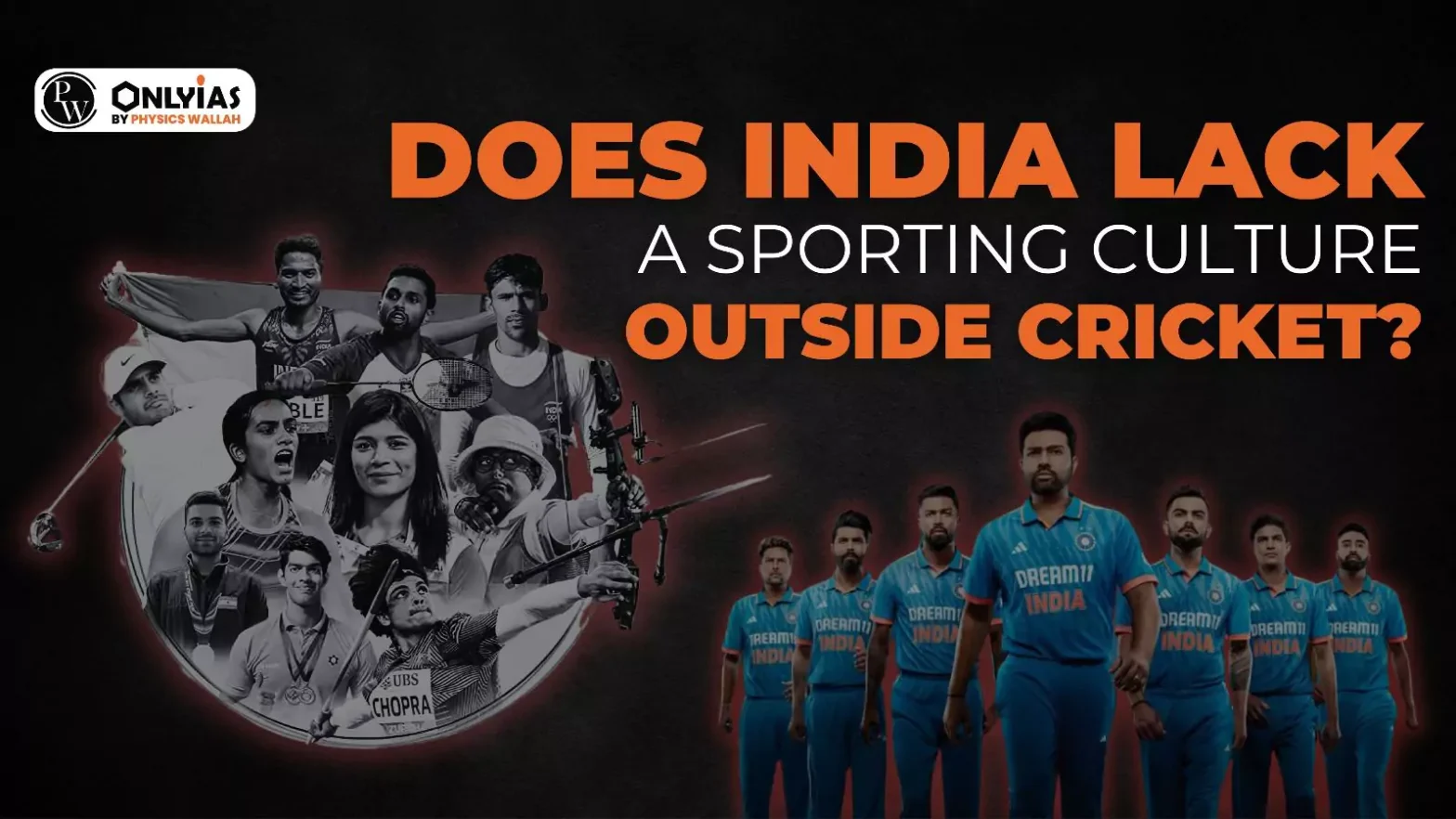The conclusion of the Paris Olympics with India securing six medals — one silver and five bronze — and ranking 71st in the medals tally has sparked discussions about the need for a robust sporting culture beyond cricket.
India’s Performance at Olympics
- Though India’s Olympic performance this year was similar to the previous one, with nearly the same number of medals, the level of criticism has increased. This criticism indicates that India is developing as a nation and is not satisfied with maintaining the status quo. It reflects the belief that India is capable of achieving more and deserves better. The government and sportspeople are now under pressure to meet the aspirations of the country’s people.
- Also, Indian athletes showed greater visibility at the Olympics, with many finishing in fourth place and narrowly missing out on medals. While this indicates improvement.
Enroll now for UPSC Online Course
Comparing with the U.S. and China:
- It is not yet appropriate to compare India’s sporting performance directly with the U.S., which has a history of over 100 years in sports. American athlete Jesse Owens’ Olympic success during Adolf Hitler’s time is an example of this long-standing culture.
- Also, China, which won only about five medals in the 1988 Olympics, has since risen to challenge the U.S. due to a deliberate focus on building a sporting culture. China’s success is attributed to early identification and nurturing of talent across various sports.
- India has only started funding and developing multiple sports in the last 8-10 years, and while results are gradually improving, more time is needed to reach the level of global sporting powers.
|
Thus, criticism of India’s Olympic performance must be seen as positive, as it encourages both athletes and administrators to strive for better outcomes.Despite the growing impatience for better results, it’s important to acknowledge the progress and avoid direct comparisons with countries like the U.S. and China. India is on the right track and will likely improve its standing over time.
Current Scenario
- Infrastructure and Talent Identification: India now wins 7-8 Olympic medals across different sports due to improved talent identification and support. The infrastructure and sports science are much better than in the past, with government initiatives like Khelo India showing promise, though results will take time to fully manifest.
- Sporting Ecosystem:There has been significant progress since the London (2012) and Rio (2016) Olympics in developing a sporting ecosystem. However, there is still a long way to go in creating a culture that consistently supports and nurtures talent across various sports.
- Limited Participation in Sports: Currently, India participates in approximately 16 sports at the Olympics, indicating a need for broader involvement and talent development across more disciplines to enhance its medal tally.
Check Out UPSC NCERT Textbooks From PW Store
Analysis: Are We a One-Sport Nation?
- No, India is not solely focused on cricket; otherwise, other sports would not receive attention or funding. Cricket dominates due to its popularity, but this does not mean that other sports are neglected. For example, badminton, with stars like P.V. Sindhu, Parupalli Kashyap, and Saina Nehwal, have significant recognition. However, there is still a lack of general awareness about the basic rules of many sports.
- Athletes in other sports face challenges due to limited public interest and awareness. Athletes face undue pressure and scrutiny, especially when they fall just short of winning medals in big events like Olympics.
Thus, greater year-round interest and involvement in various sports are needed to support and sustain athletic development beyond the Olympics cycle.
Conclusion/Way Forward
- Building a Sporting Culture:
- To become a true sporting nation, India needs to foster year-round interest and support for various sports, not just during major events. The country has the potential to excel in multiple sports if proper encouragement, better financial prospects, scientific training, and supportive infrastructure are provided.
- Khelo India and Grassroots Development:
- Initiatives like Khelo India are crucial as they identify talent at the grassroots level. The government’s role in providing funding and support is essential, but the system must be managed professionally. Private academies also have a role in nurturing talent.
- Long-term Vision:
- A sporting culture should be cultivated from small institutions, where children are encouraged to participate in sports from a young age. This not only helps in producing top athletes but also promotes overall health and well-being in society.
- Learning from Cricket’s Success:
- Cricket’s success in India is due to a well-established infrastructure, consistent investment, and a culture that promotes the sport. Other sports can learn from this by building infrastructure, providing quality coaching, and ensuring that athletes have access to the best training and recovery facilities.
Debate: Is a government or public sector job the only way to attract children to sports? Does it restrict the growth of a sports culture?
- The debate over whether sports should be a path to government jobs is ongoing. Some argue that financial incentives, such as stable jobs, are necessary to attract talent, while others believe sports should be pursued for passion and not as a job guarantee(US Model). A balance needs to be struck where athletes are supported financially but are also encouraged to pursue education and other career options.
|
Conclusion
India may not yet be a sporting nation in the true sense, but it has the potential to become one. The journey requires collective effort from the government, private sector, and society at large to nurture and sustain a diverse sporting culture.
Enroll now for UPSC Online Classes
![]() 16 Aug 2024
16 Aug 2024

